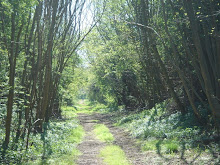
Mark Knaust at the site of the former Catskill Mountain House.
Thomas Jefferson, America’s third president and best-known nature lover, once said that “there is not a sprig of grass that shoots uninteresting to me.” As a naturalist, he was a keen observer of the objects in the world around him and was inspired to send Lewis and Clark to explore uncharted territories. He was even committed to uncovering a natural curiosity -- the bones of a mastodon found in what was then Ulster County in 1801 -- when he helped to fund America’s first scientific expedition headed by his friend and Revolutionary War veteran, Charles Willson Peale. The discovery of the great mastodon was memorialized in one of Peale’s most engaging paintings. Jefferson’s love of the natural world and great sense of curiosity enabled unparalleled discoveries and advancement in scientific methods.
Recent commentary in local papers suggests Jeffersonian thought to be outdated. To the contrary, it is perhaps more relevant today than ever before. The very basic 21st century quality of life issues need to be evaluated as closely as the keen observer Jefferson did with issues facing him in the late 18th and early 19th centuries with what he stated as “an interest or affection in every bud that opens, in every breath that blows around me.”
America’s population growth and the increase in population locally -- due in part to the tragedy of September 11 -- have combined to push a new set of quality-of-life issues to the fore: traffic, congestion, disappearance of open spaces, strain on water supply and a lack of affordable housing. These issues are of great importance to many folks here in Saugerties.
A drive down Main Street or Ulster Avenue, through 9W in Barclay Heights or through the intersection of routes 212 and 32, reveals traffic congestion on the highways in Saugerties is increasing dramatically. A drive down any back road will reveal haphazard development of once beautiful farmland and natural areas. The increase in residential and business development will surely impact our treasured water supply.
Unfortunately, even after the adoption in 1999 of the Comprehensive Plan for the Town of Saugerties, there have been instances of spot zoning and expansive business ventures with little or no review. These issues are in direct opposition to the comprehensive plan. The comprehensive plan offers the best guide that I know of right now to lead Saugerties into the 21st century. The plan defines what is important to this community and is to guide change as consistent with community goals.
Let’s not wait for another historic house or cemetery to be demolished or farmland to be developed; let’s not wait to inventory our precious water resources. By taking a proactive initiative on topics discussed in the Comprehensive Plan and giving thoughtful consideration to the quality-of-life issues like public safety, education, transportation, recreational opportunities and the esprit de corps of this community, we can affirm what values we want this community to aspire to. A blade of grass and a scientific expedition are as relevant today as they were over 200 years ago.
- Mark H. Knaust




